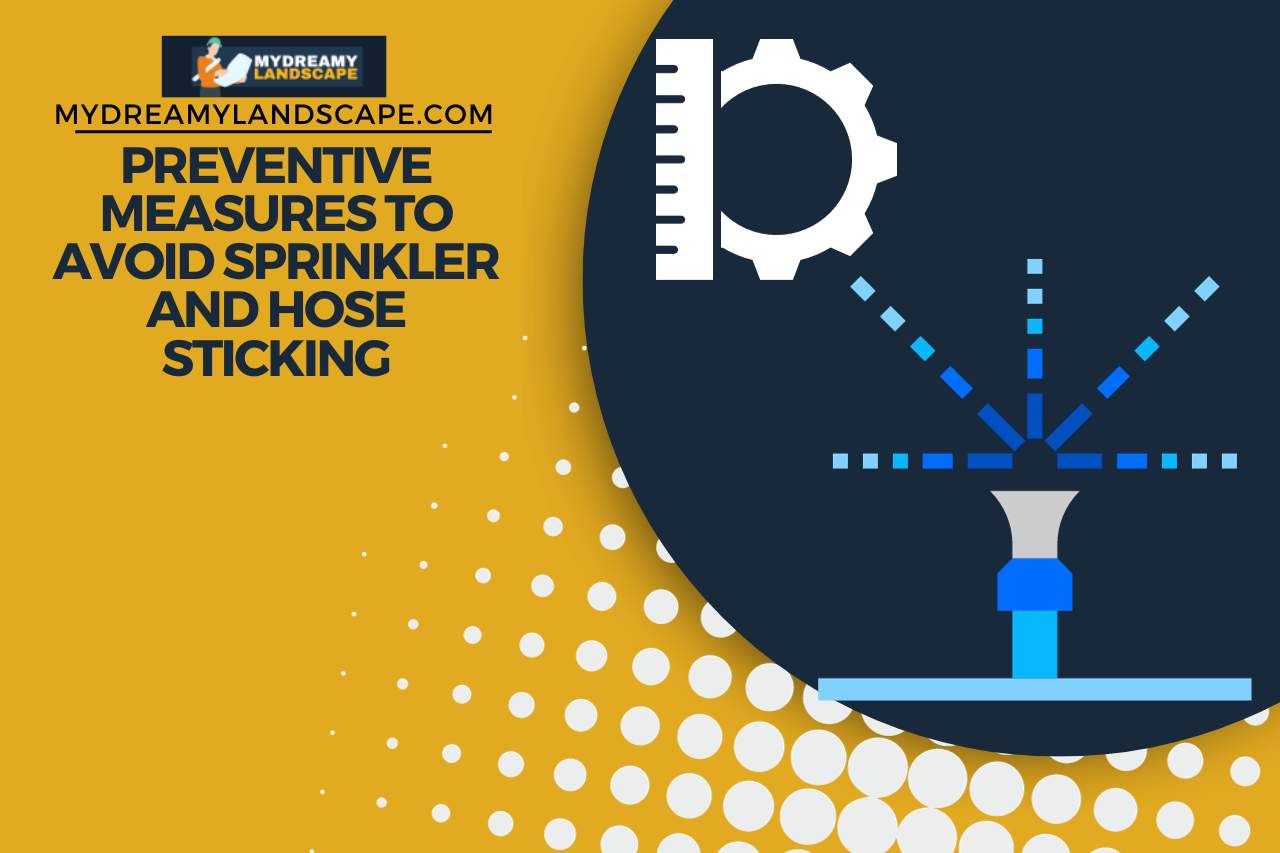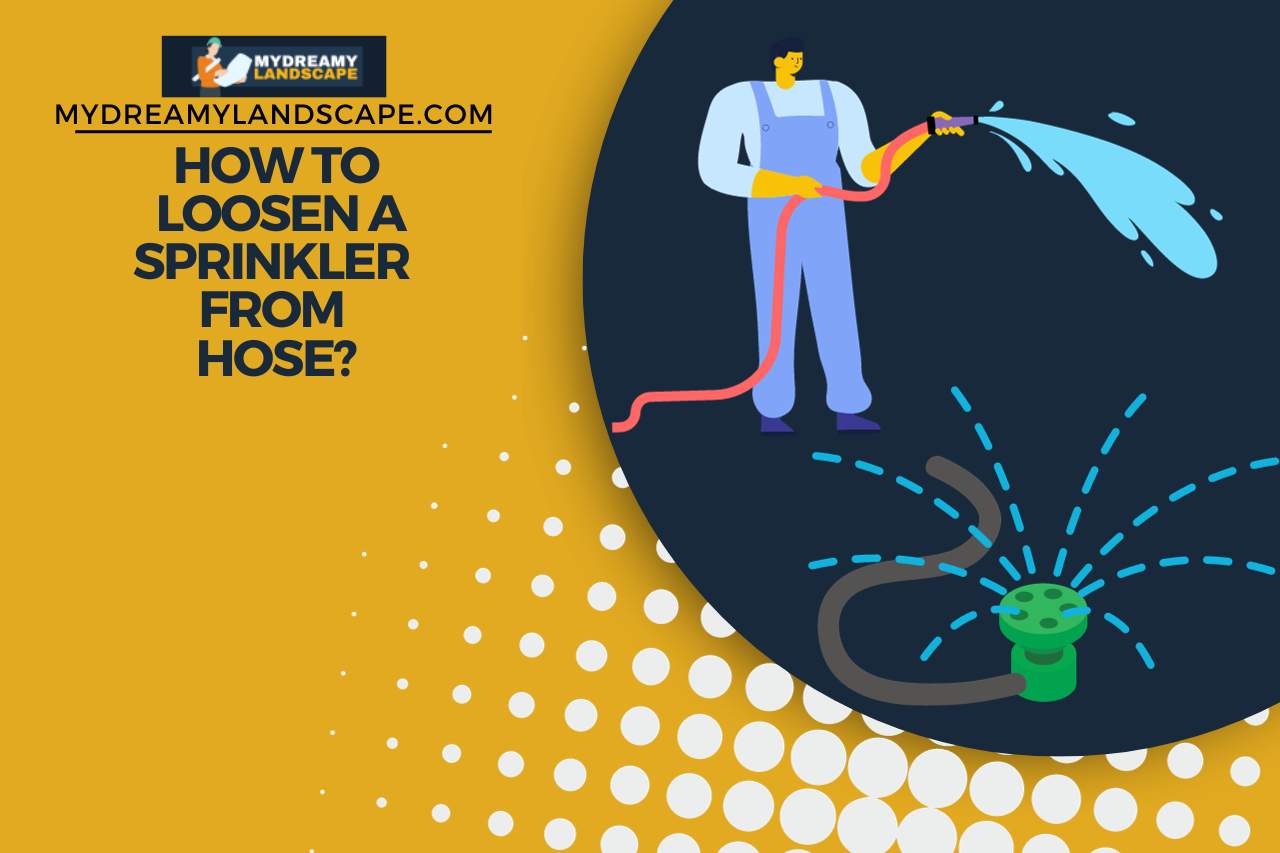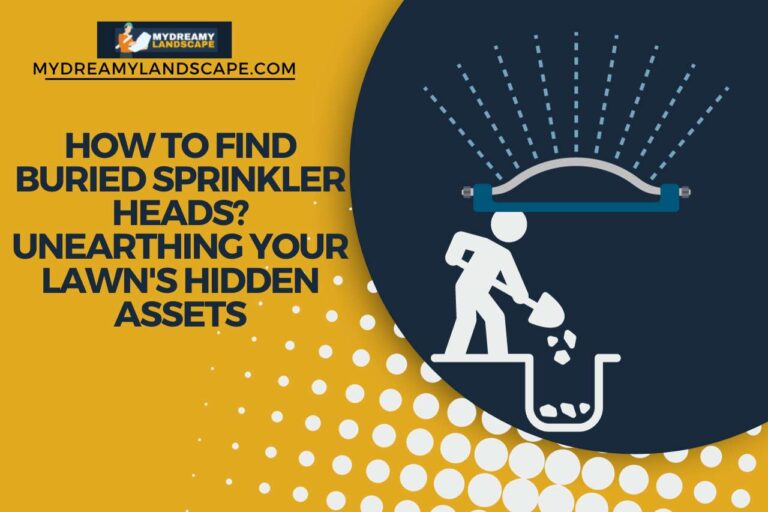How to Loosen a Sprinkler from Hose? [With Preventive Tips]
In this quick guide, we are discussing How to Loosen a Sprinkler from Hose offering you practical advice and methods. We know you are in a hurry. So, let’s get going right away.
How to Loosen a Sprinkler from Hose?
Here’s our step-by-step guide on how to loosen a sprinkler from the hose;
1st step – Turn Off the Water
Ensure that the water supply to your sprinkler system is turned off to avoid any accidental water spray or pressure issues.
2nd Step – Release Pressure
Open the sprinkler to release any built-up water pressure in the hose.
3rd Step – Use Protective Gloves
Wear gloves to protect your hands and improve your grip while you are working on the sprinkler.
4th Step – Attempt Manual Loosening
First, try to twist your sprinkler off by hand. Then, hold the hose firmly and turn off the sprinkler counterclockwise.
5th Step – Apply Lubricant
If your sprinkler doesn’t budge, apply a penetrating lubricant such as WD-40 around the connection point. Wait for a few minutes for it to seep in and loosen any corrosion or grime.
6th Step – Use Pliers or a Wrench
If all your manual effort fails, use pliers or a wrench for extra leverage. Grip the hose connector with one tool and the sprinkler using the other, then gently twist off counterclockwise.
7th Step – Apply Gentle Heat:
For extremely stubborn cases, applying some gentle heat with your hair dryer can expand the metal slightly, making it easier for you to twist off.
8th Step – Check for Damage
Once removed, inspect both the hose end and sprinkler for any damage or wear.
Common Reasons for a Sprinkler Getting Stuck on a Hose
Here are some common reasons why you would find it difficult to separate the sprinkler from the hose.
Corrosion and Rust
Over time, the metal components can corrode, especially if your sprinkler and hose are exposed to moisture and not dried properly. This corrosion can be the biggest culprit for the sprinkler to get stuck on a hose.
Cross-Threaded Connection
If the sprinkler was not threaded correctly onto the hose in the first place, it can become cross-threaded. This improper alignment makes it difficult for you to remove it later.
Over-Tightening
Tightening the sprinkler too much can deform the connector, making it challenging for you to unscrew.
Dirt and Debris
Dirt, sand, or other debris can get lodged in the threads of the hose and sprinkler connection, acting as a lock.
Expansion and Contraction
Fluctuations in temperature can cause the materials of the hose and sprinkler to expand and contract, leading to a tighter fit over time.
Quality of Materials
Lower-quality materials may be more prone to warping or deterioration, which can result in a stuck sprinkler.
Lack of Maintenance
Regular maintenance, including cleaning and lubricating threads, can prevent sticking, but neglecting these steps can lead to such problems.

How to Prevent Sprinkler Sticking to Hose?
Preventing a sprinkler from sticking to the hose requires routine care and mindful practices. Here are your key preventive measures:
- Correct Installation: When attaching the sprinkler, ensure that you are threaded correctly and evenly. Avoid cross-threading which can cause sticking issues later.
- Avoid Over-Tightening: Tighten the sprinkler firmly but don’t try to overdo it. Over-tightening can deform your threads and make all your future removal challenging.
- Use Teflon Tape: Wrapping Teflon tape around the hose threads can provide a smoother connection and prevent sticking due to any corrosion.
- Regular Lubrication: Applying any silicone-based lubricant to the threads of both the hose and sprinkler can prevent rust and make detachment easier.
- Routine Cleaning: Clean the hose and sprinkler threads regularly to remove the dirt, debris, and mineral buildup that can cause your sticking.
- Proper Storage: Store the hose and sprinkler in a dry, covered area to prevent rust and corrosion from moisture exposure.
- Use Quality Equipment: Invest in high-quality hoses and sprinklers using durable materials and construction to reduce the likelihood of sticking.
- Seasonal Maintenance: Before starting and ending the watering session, check and maintain the hose and sprinkler connections.
You May Also Like
- The Oscillating Sprinkler Stopped Moving – Keep It Oscillating!
- How to Find Buried Sprinkler Heads? Unearthing Your Lawn’s Hidden Assets
- How To Raise The Sprinkler Head? Elevate Your Lawn Care
- Sprinkler Head Not Rotating – (Causes and Solutions)
- Why does My Sprinkler Head Leak? Decoding the Mystery!
- Oscillating vs Rotary Sprinklers – Which Sprinkler is Right for You?
- Why is My Impact Sprinkler Rotating Slowly? Sluggish Sprinkler Solutions!
- How Do you Adjust Impact Sprinkler Rotation? Troubleshooting & Adjustment Tips!
- How Much Water does an Oscillating Sprinkler Use Per Minute? Eco-Friendly Lawn Care
- Can you Connect Two Oscillating Sprinklers Together? Mastering Multi-Sprinkler Setup!
- How Do you Control an Oscillating Sprinkler? (Step-by-Step Guid



![Can you Use a Sprinkler with an Expandable Hose? [Pros and Cons]](https://mydreamylandscape.com/wp-content/uploads/2023/11/How-often-should-you-pressure-wash-your-driveway-14-768x512.jpg)


